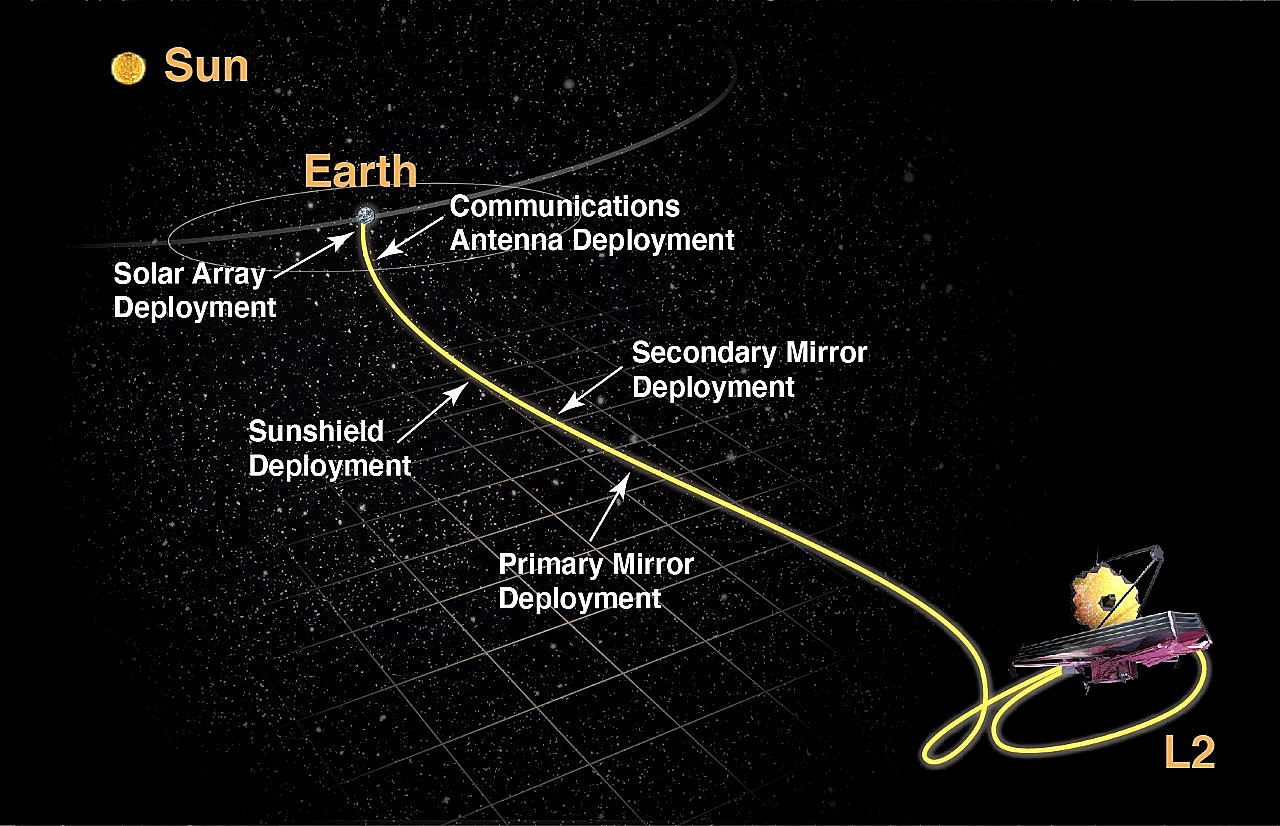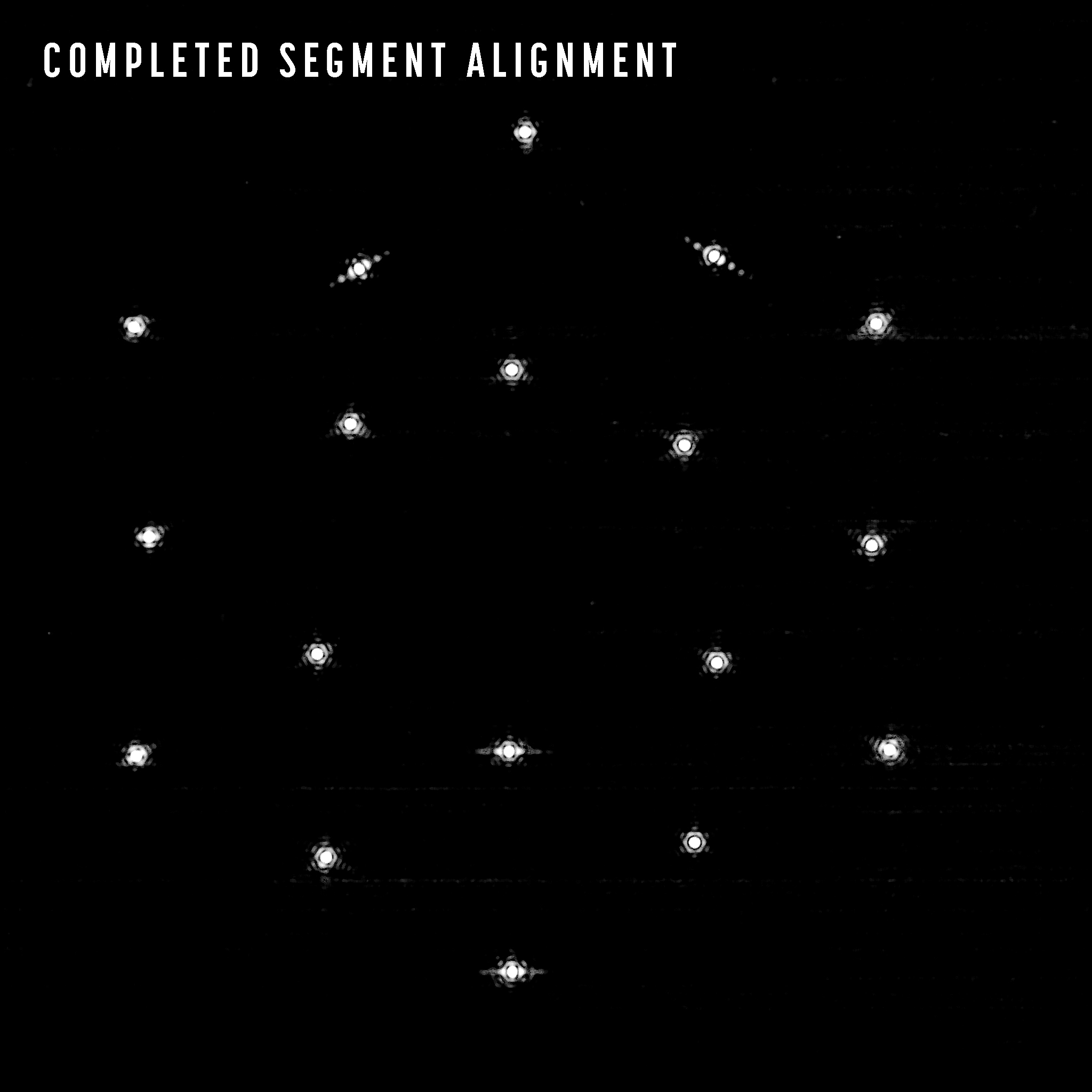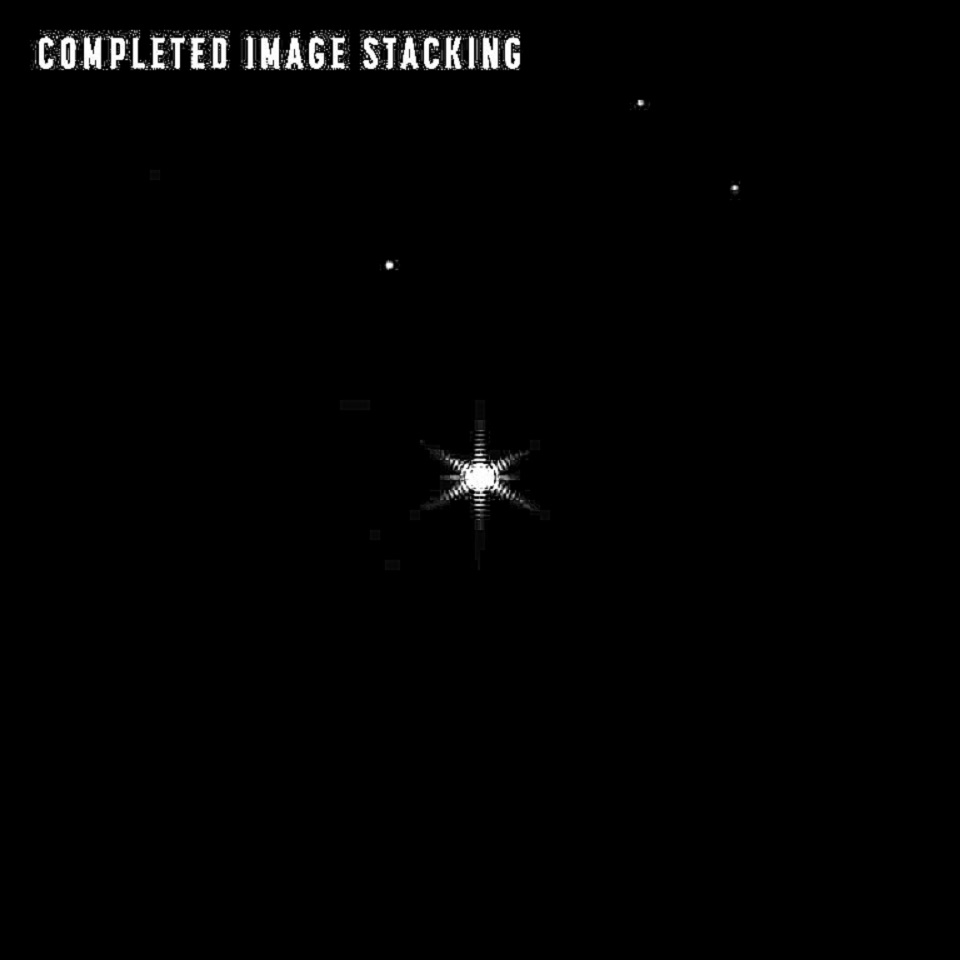In Focus
James Webb telescope focusing test (credit: JPL/NASA/ESA)
The engineering and technical marvel that is the James Webb space telescope continues to amaze everyone. Launched on Christmas Day 2021 this 'next-gen' astronomical observatory, designed to replace the aging Hubble space telescope nearing the end of its life, is almost fully operational now. Launch by the European Space Agency from their space port in South America, the golden observatory traveled one million miles to reach its destination. The flight path required brief rocket firings to reach one of two locations in space where both the Sun and Earth's gravity is canceled out. The Lagrange point is where the telescope is now permanently positioned and stable.
As the Webb traveled along its route to Lagrange, the mechanical observatory had to execute over 300 discrete, independent, and existential steps. This elaborate process was required to unfurl its origami-like puzzle of solar panels, heat shields, and gold mirrors all folded together, along with an array of scientific instruments, inside the giant Ariane-5 rocket that lifted it into space. Failure of any one step would have doomed the $10 billion dollar mission. Luckily, the JPL, ESA, NASA, and other space engineers had tested it well and everything worked as designed.

James Webb space telescope flight path (credit: NASA)
NASA produced a video to explain how many crucial maneuvers were required to be executed before the new telescope could function.
Once the Webb was successfully deployed, its gigantic golden mirror need to have all of its 18 hexagonal seqments align to create the perfect surface needed to clearly observe distant objects in the universe. As any photographer knows, without a proper focus any photos will be blurry. The exact same issue faced the scientists who built the telescope. However, the focusing of this gigantic camera had to be accomplished mechanically 1 million miles from Earth. The focusing process required tiny motors, behind each panel segment, to shift its segment by fractions of a millimeter during the set-up process. The first test images have now been received.
Eighteen separate points of light from a star used for the focusing test have produced the first digital photograph as separate points in the test image and appear as tiny stars. All 18 images were then 'stacked' to produce a single photograph of the star. Besides all the technical and engineering steps required to make the Webb operational, it was this photographic focusing step that was required for the telescope to capture clear pictures.
Once the Webb begins to peer at curious objects in the universe, maybe it will be able to see into a black hole, or the surface of an exoplanet, and maybe if anyone is looking back at us. WHB
James Webb space telescope mirror alignment and focusing test with first Webb photograph. (credit: JPL/NASA/ESA)

